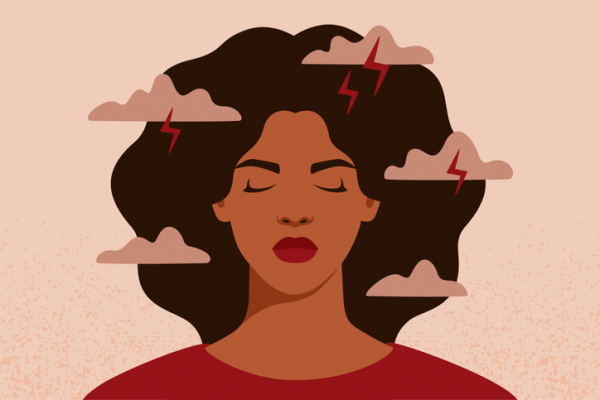Can watching sports be bad for your health?

As the new year rolls on, sports fans rejoice! You’ve had the excitement of the college football bowl games and the national championship game, the NFL playoff games are winnowing teams down to the Super Bowl contestants, and basketball and hockey seasons are in full swing. Spring training for the upcoming Major League Baseball season is around the corner.
But hold these thoughts a moment. Watching sports — not just playing them — can be hazardous to your health. I’ve seen it firsthand while working in a walk-in clinic near Fenway Park, where people would show up bleeding from cuts that needed stitches (from trips and falls at the stadium), broken bones (from trying to catch a foul ball or an altercation with another fan), and dehydration.
Most of these injuries weren’t life-threatening. But there’s evidence that the health impact of sports spectatorship can be far more serious for some of us — and, perhaps, underappreciated.
What are the health risks of watching live sports?
When you’re watching games in person, some risks are related to the weather and other fans. For example:
- Watching a baseball game in the summer for hours may lead to heat stroke or dehydration.
- Live winter football games may raise the risk of hypothermia, frostbite, or other cold-related problems.
- Stampedes, riots, and brawls between rival fans watching soccer matches are not rare and may actually be on the rise.
- And, as mentioned, spectators of live sports can be injured by balls hit into the stands or other flying objects such as bats, pucks, or golf balls.
How could watching sports on TV boost health risks?
Doctors and nurses often describe how quiet things get in the emergency room during a World Series game or the Super Bowl. But once the game ends, it tends to get much busier. One theory is that people with chest pain, trouble breathing, or other symptoms of a potentially serious problem who ordinarily would have reported to the emergency room right away may delay seeking care until after the game.
Of course, there’s another possibility: the game itself — especially if a game is close and particularly exciting — might cause enough stress on the body that heart attacks, strokes, or other dangerous conditions develop.
Research supporting the idea that watching sports can negatively affect your health includes:
- Older studies have linked hospital admissions for heart failure and cardiac arrest with watching sporting events.
- A 2017 study found that spectators of Montreal Canadiens hockey games experienced a doubling of their heart rate during games. The effect was more pronounced for live games than televised games, but even the latter experience led to faster heart rates similar to the effect of moderate exercise.
- A 2022 study found that hospital admissions for cardiovascular problems jumped 15% during and just after World Cup soccer games.
Together, these studies suggest that watching sports can be stressful enough to trigger dangerous cardiovascular events.
It’s worth emphasizing that most people watching sports enjoy it and do not experience any health problems related to the game. But these studies suggest that spectating may carry some small risk, similar to what might accompany moderate or vigorous exercise. This may be most relevant for people who are older or who already have cardiovascular disease.
What’s a sports fan to do?
One common recommendation is to remember that it’s only a game. Of course, if you care a lot about sports or a particular team, that advice is unlikely to help. A second is to get regular exercise. Staying physically active strengthens the heart and lowers blood pressure, which could help ward off some of the health risks described above.
Five additional game-day precautions are:
- Avoid overeating, especially salty junk food. For some, overindulging in food, drink, and salt can stress the heart or trigger heart failure.
- Be prepared for the weather. Check the forecast. If you’re planning to watch a game in the cold, dress in layers, use hand warmers, and drink warm fluids. If you’re going to be out in the sun, use sunscreen liberally, wear a hat, and hydrate well.
- If you have cardiovascular disease, don’t forget to take your medications, especially if there’s a big game coming up. And if you develop worrisome symptoms, such as chest pain or trouble breathing, seek medical attention right away. Don’t wait till the game ends!
- Stay hydrated and moderate your alcohol intake. Stay well-hydrated by drinking water, especially if you’re out in the heat for hours. Although beer is a liquid, it’s also a diuretic, meaning it can make you urinate more and lose more fluids than other beverages.
- Stay alert at live events. Give yourself a fighting chance of getting out of the way of a line-drive foul ball or an errant bat that’s slipped out of the batter’s hands during a swing.
The bottom line
I can attest to many upsides of watching sports: the excitement of competition and the bonding and camaraderie with likeminded friends, family, and other fans. And perhaps watching sports might improve your health if sports spectatorship sparks sports participation.
While watching sports has been linked to certain health risks, the overall risk is likely low for most people. And you can take steps to reduce this. The health risks of spectatorship only rarely require giving up watching a favorite team. So, put on your team jersey, cheer your team on to victory, and stay healthy while you’re at it. Oh, and watch out for outraged fans or flying bats.
About the Author

Robert H. Shmerling, MD, Senior Faculty Editor, Harvard Health Publishing; Editorial Advisory Board Member, Harvard Health Publishing
Dr. Robert H. Shmerling is the former clinical chief of the division of rheumatology at Beth Israel Deaconess Medical Center (BIDMC), and is a current member of the corresponding faculty in medicine at Harvard Medical School. … See Full Bio View all posts by Robert H. Shmerling, MD








